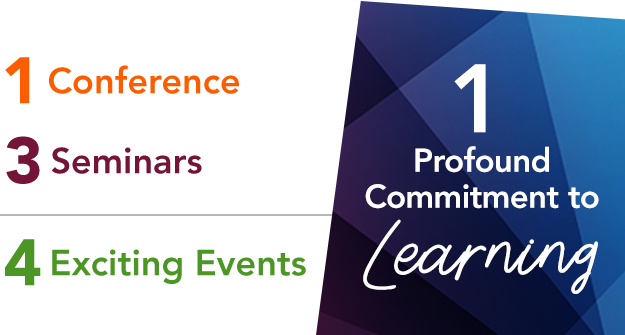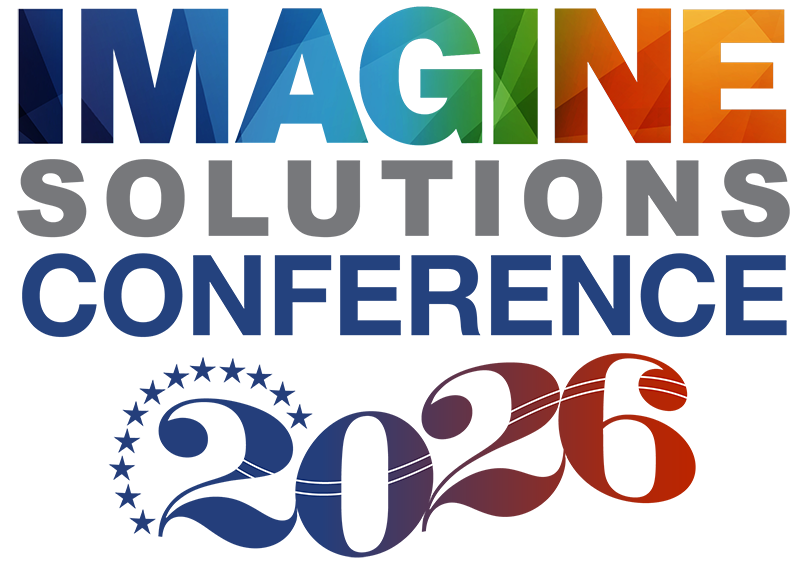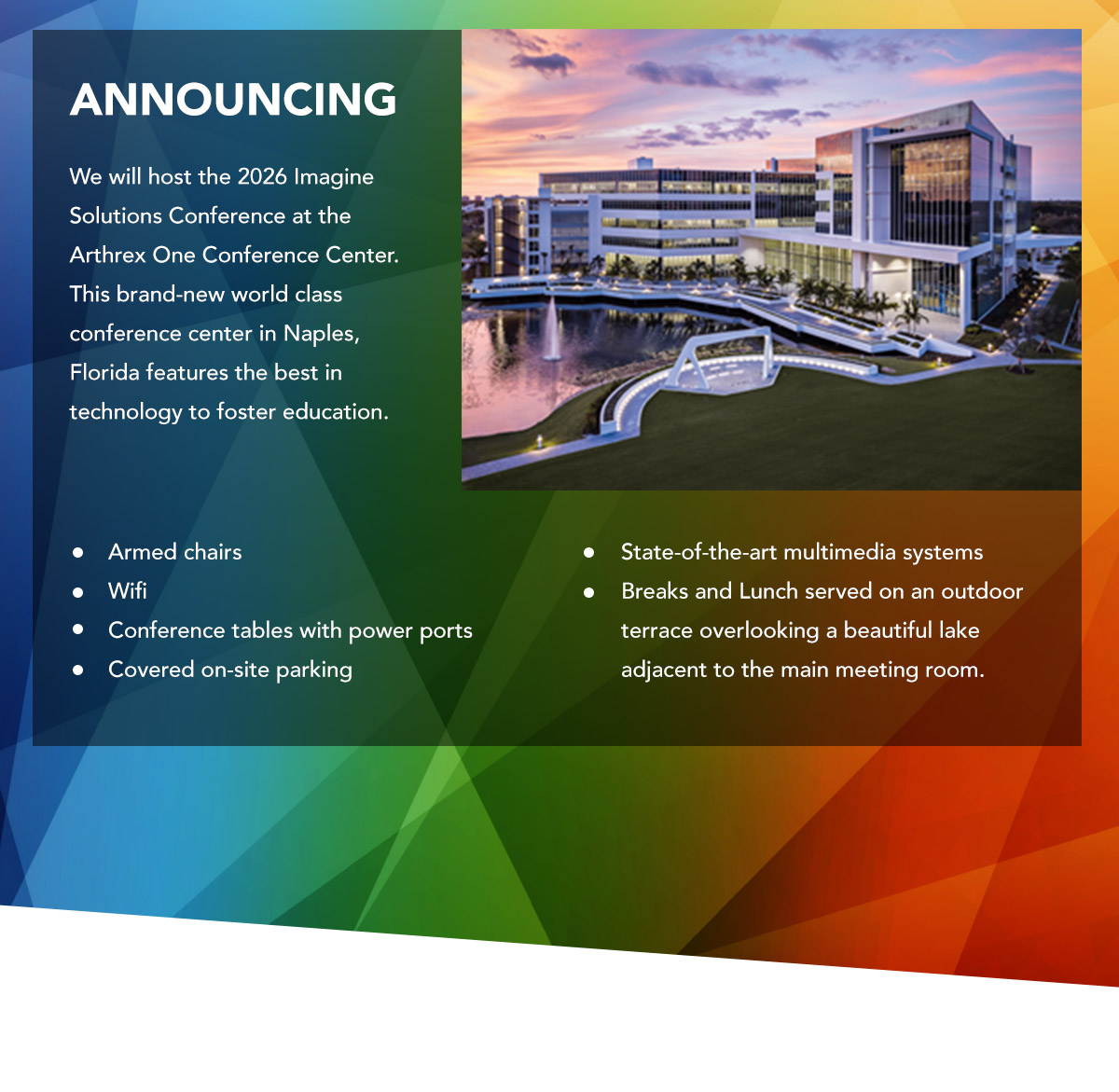Ideas at the edges
Imagine Solutions: A nationally recognized Thought Leader Conference & 3 deep-dive Seminars driven by a profound respect for learning
An experience that awes and inspires. Events that compel you to think and think again. Speakers and presentations that leave you wanting more because the ideas and endorphins racing through your brain are sending you a message: what you’ve just learned is important and exhilarating.
Ideas at the edges—breakthroughs, cutting-edge concepts—still fuzzy in most minds—will be brought into sharp focus by some of the most visionary thinkers in the world at the Imagine Solutions Conference in February and three Imagine Solutions Seminars: November, January & March.

Conference

Thought Leaders Conference
Held in Naples, Florida
March 2, 2026
8:30 am – 5:00 pm
For one exciting day, speakers will share groundbreaking breakthroughs in science and technology, social innovations impacting millions, and the efforts of explorers and conservationists making a significant difference. Leaders of great institutions will reveal major developments, while voices in ethics, civics, education, and news will discuss their influence on society. And that’s just the beginning.
If you have attended our conferences before, you know to expect a blend of learning, amazement, and networking with fascinating individuals. If this is your first time, you will wonder why you haven’t joined us sooner. We promise to leave you inspired.

Seminars

January 22, 2026
5:00 pm – 6:30 pm
The One Seminar You Will Not Want to Miss! The U.S. Navy SEALs were born in the depths of World War II, when underwater demolition teams cleared the beaches of Normandy under enemy fire. From those perilous beginnings emerged America’s most elite maritime special operations force. Their legendary “Hell Week” pushes candidates through 120 hours of relentless physical and mental punishment—so grueling that only one in four makes it through.


Rear Admiral Matt Burns
U.S. Navy SEALsTicket Pricing
$70 per person
Event Details
Featuring Rear Admiral Matt Burns, U.S. Navy SEALs
From the frozen mountains of Afghanistan to the pirate-infested waters off Somalia, SEALs have executed high-stakes missions that defy the limits of human endurance. In 2009, three SEAL snipers aboard a rolling ship fired simultaneous, near-impossible shots to rescue Captain Richard Phillips. Two years later, SEAL Team Six carried out Operation Neptune Spear, eliminating Osama bin Laden in a daring raid deep inside Pakistan.
Their motto—“The Only Easy Day Was Yesterday”—captures a brotherhood forged through hypothermia, sleep deprivation, and unyielding resolve. Today’s SEALs can survive behind enemy lines for weeks, speak multiple languages, and conduct surgical strikes that alter the course of history.
The story of the Navy SEALs is more than a chronicle of warfare, it’s a testament to human endurance, innovation, and the quiet professionals whose courage continues to shape our world.
During this seminar, Rear Admiral Matt Burns takes us behind the scenes of this extraordinary force—revealing how relentless training, strategic mindset, and an unbreakable culture of brotherhood have made the U.S. Navy SEALs legendary.
Rear Admiral Burns’ distinguished career includes operational assignments with SEAL Teams TWO and EIGHT, as well as leadership roles at the Naval Special Warfare Development Group—home of SEAL Team Six. He has commanded the Naval Special Warfare Tactical Development and Evaluation Squadron FIVE, the Naval Special Warfare Development Group, and multiple Joint Special Operations Task Forces.
You’ll learn:
How a handful of underwater demolition teams evolved into the world’s most elite warriors
What “The only easy day was yesterday” truly means inside SEAL culture
Why mental toughness—not muscle—defines their success
Examples of how SEALs solve problems and build partnerships where others cannot
Join us for an unforgettable look inside the world of America’s most elite warriors.
Rear Admiral Matt Burns enlisted in the United States Navy in 1988 and graduated Underwater Demolition/SEAL Training class 158. Enlisted tours included SDV Team ONE, SEAL Team FIVE, and Naval Special Warfare Development Group. He became the first former enlisted Navy sailor to be promoted to flag officer rank (Admiral) through the U.S. Navy’s Seaman to Admiral Program, now known as Seaman to Admiral-21 (STA-21). In 1995 he enrolled in the Naval Postgraduate School in Monterey, California, in just three years Burns earned both a bachelor’s degree and a master’s degree.
His operational assignments include tours at SEAL Team TWO and EIGHT. At Naval Special Warfare Development Group (in charge of Seal Team Six), he served as troop commander, group operations officer, selection and training director, and deputy commander. His served his command tours at Naval Special Warfare Tactical Development and Evaluation Squadron Five, Naval Special Warfare Development Group, and multiple Joint Special Operations Task Forces.
His staff assignments include Naval Special Warfare Officer Community Manager, and tours at Joint Special Operations Command as deputy J3 and J3. His first flag officer (Admiral) assignment was as assistant commander of the Joint Special Operations Command (JSOC), U.S. Special Operations Command (SOCOM), in Tampa, FL.

